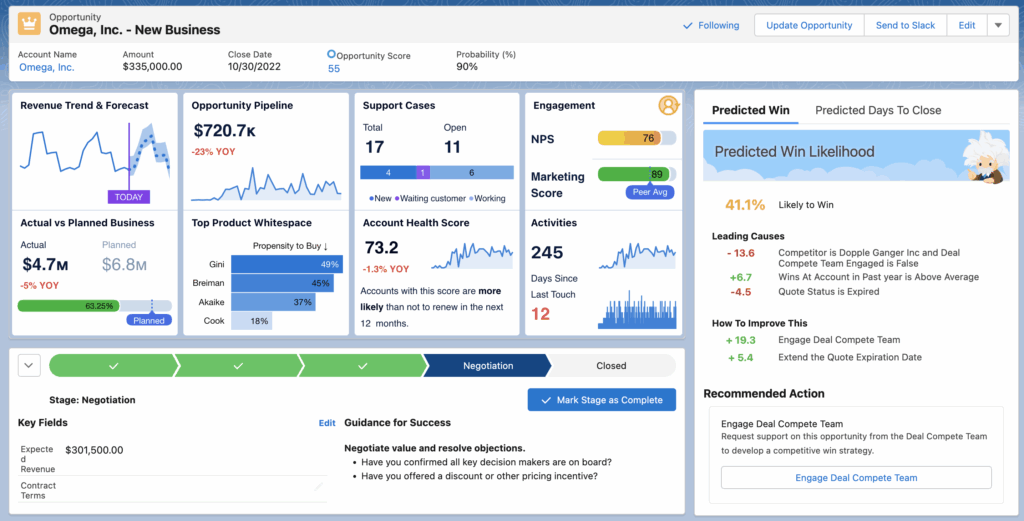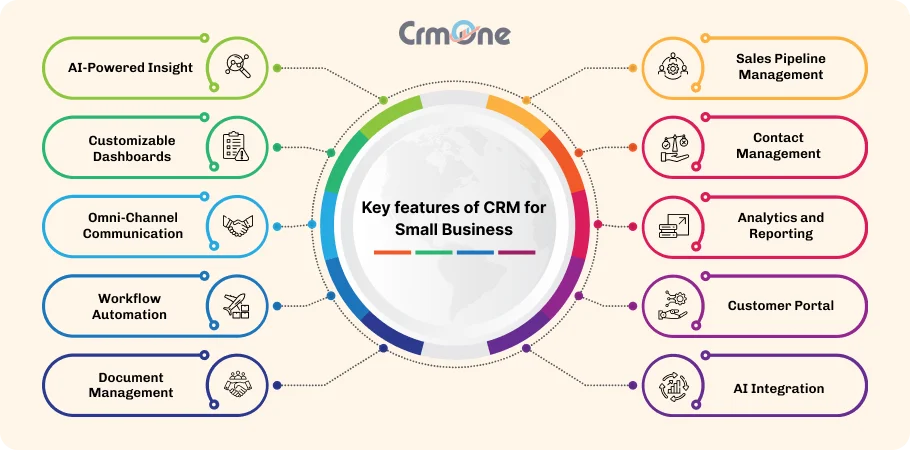
CRM Marketing Analytics: Unleashing the Power of Data for Unprecedented Growth
In today’s hyper-competitive business landscape, understanding your customers is no longer a luxury – it’s an absolute necessity. Businesses that thrive are those that can anticipate customer needs, personalize experiences, and build lasting relationships. This is where CRM marketing analytics comes into play, transforming raw data into actionable insights that drive growth and profitability. This in-depth guide will explore the multifaceted world of CRM marketing analytics, providing you with the knowledge and strategies to harness its power.
What is CRM Marketing Analytics?
At its core, CRM (Customer Relationship Management) marketing analytics is the practice of analyzing customer data within a CRM system to gain insights into customer behavior, preferences, and trends. This data-driven approach helps businesses make informed decisions about marketing campaigns, sales strategies, and customer service initiatives. It’s about moving beyond gut feelings and hunches and embracing a data-driven approach to customer engagement.
Think of it as having a powerful magnifying glass that allows you to examine your customer base in detail. You can see patterns, identify opportunities, and understand what truly resonates with your audience. Unlike traditional marketing approaches that often rely on broad generalizations, CRM marketing analytics provides a granular view of individual customer interactions.
Key Components of CRM Marketing Analytics
- Data Collection: Gathering customer data from various sources, including CRM systems, website interactions, social media, and email marketing.
- Data Storage: Organizing and storing the collected data in a structured and accessible format.
- Data Analysis: Applying analytical techniques to uncover patterns, trends, and insights from the data.
- Reporting and Visualization: Presenting the findings in a clear and concise manner through dashboards, reports, and visualizations.
- Actionable Insights: Translating the insights into concrete recommendations for marketing and sales strategies.
The Benefits of CRM Marketing Analytics
Implementing a robust CRM marketing analytics strategy offers a multitude of benefits for businesses of all sizes. It’s not just about collecting data; it’s about turning that data into a competitive advantage. Here are some of the key advantages:
Improved Customer Understanding
CRM analytics provides a 360-degree view of your customers, allowing you to understand their demographics, behaviors, preferences, and pain points. This deep understanding empowers you to create highly targeted and personalized marketing campaigns.
Enhanced Customer Segmentation
By segmenting your customer base based on various criteria (e.g., purchase history, demographics, engagement levels), you can tailor your messaging and offers to specific groups. This leads to higher conversion rates and improved customer satisfaction. Instead of treating everyone the same, you can create tailored experiences that resonate with each segment.
Increased Marketing ROI
Data-driven insights enable you to optimize your marketing spend by focusing on the most effective channels and campaigns. You can identify which initiatives are driving the best results and allocate your resources accordingly. This leads to a higher return on investment (ROI) and a more efficient use of your marketing budget.
Personalized Customer Experiences
CRM analytics allows you to personalize customer interactions across all touchpoints, from email marketing to website content to customer service interactions. This level of personalization creates a more engaging and relevant experience for your customers, leading to increased loyalty and advocacy.
Improved Sales Performance
By analyzing sales data and customer interactions, you can identify high-potential leads, optimize the sales process, and improve sales team performance. This results in increased sales revenue and a shorter sales cycle. You gain a better understanding of what works and what doesn’t in terms of sales strategies.
Better Customer Retention
CRM analytics helps you identify customers at risk of churning and proactively address their concerns. By understanding the reasons behind customer churn, you can implement strategies to improve customer satisfaction and retention rates. This is much more cost-effective than acquiring new customers.
Data-Driven Decision Making
CRM analytics provides a solid foundation for making data-driven decisions across all areas of your business. Instead of relying on guesswork, you can use data to inform your strategies and measure their effectiveness. This leads to more informed choices and a greater likelihood of success.
Key Metrics to Track in CRM Marketing Analytics
To effectively leverage CRM marketing analytics, it’s crucial to track the right metrics. These metrics provide valuable insights into your marketing performance and customer behavior. Here are some of the most important metrics to monitor:
Customer Acquisition Cost (CAC)
CAC measures the cost of acquiring a new customer. It’s calculated by dividing the total marketing and sales expenses by the number of new customers acquired over a specific period. Tracking CAC helps you assess the efficiency of your customer acquisition efforts. Understanding your CAC is critical for determining the profitability of your marketing campaigns.
Customer Lifetime Value (CLTV)
CLTV estimates the total revenue a customer is expected to generate throughout their relationship with your business. It’s a crucial metric for understanding the long-term value of your customers and making informed decisions about customer acquisition and retention strategies. A higher CLTV indicates a more profitable customer base.
Conversion Rate
Conversion rate measures the percentage of website visitors or leads who take a desired action, such as making a purchase, filling out a form, or signing up for a newsletter. Tracking conversion rates helps you assess the effectiveness of your marketing campaigns and website design. Optimizing your conversion rates is essential for maximizing your sales and revenue.
Churn Rate
Churn rate measures the percentage of customers who stop doing business with your company over a specific period. Tracking churn rate helps you identify customers at risk of leaving and implement strategies to improve customer retention. Reducing churn is crucial for maintaining a stable customer base and driving sustainable growth.
Customer Satisfaction Score (CSAT)
CSAT measures customer satisfaction levels. It’s typically collected through surveys or feedback forms after a customer interaction. Tracking CSAT helps you understand how satisfied your customers are with your products, services, and customer support. High CSAT scores indicate a positive customer experience and increased customer loyalty.
Net Promoter Score (NPS)
NPS measures customer loyalty and willingness to recommend your company to others. It’s calculated by asking customers how likely they are to recommend your company on a scale of 0 to 10. NPS provides valuable insights into customer advocacy and helps you identify areas for improvement. A higher NPS indicates a more loyal customer base and greater potential for organic growth.
Marketing ROI
Marketing ROI measures the return on investment for your marketing campaigns. It’s calculated by dividing the revenue generated from a campaign by the cost of the campaign. Tracking marketing ROI helps you assess the profitability of your marketing efforts and optimize your marketing spend. This helps you justify your marketing budget and demonstrate the value of your marketing initiatives.
Website Traffic and Engagement
Analyzing website traffic and engagement metrics, such as page views, bounce rate, time on site, and pages per session, provides insights into how visitors interact with your website. This information helps you optimize your website content and design to improve user experience and drive conversions. Understanding how people navigate your website is critical to improving its effectiveness.
Data Sources for CRM Marketing Analytics
To get the most out of CRM marketing analytics, you need to integrate data from various sources. The more comprehensive your data set, the more accurate and insightful your analysis will be. Here are some key data sources:
CRM System
Your CRM system is the central hub for customer data, including contact information, interactions, and purchase history. This is the foundation of your CRM marketing analytics efforts. Ensure your CRM is properly configured to capture all relevant customer data.
Email Marketing Platform
Your email marketing platform provides data on email open rates, click-through rates, and conversions. This information is essential for evaluating the effectiveness of your email campaigns. Analyzing your email data helps you optimize your messaging and targeting.
Website Analytics
Website analytics tools, such as Google Analytics, provide data on website traffic, user behavior, and conversions. This information helps you understand how visitors interact with your website and identify areas for improvement. Website analytics are critical for optimizing your online presence.
Social Media Platforms
Social media platforms provide data on engagement, reach, and audience demographics. This information helps you understand your social media performance and optimize your social media strategy. Understanding your social media audience is key to effective marketing on these platforms.
Customer Service Software
Customer service software provides data on customer inquiries, support tickets, and resolution times. This information helps you understand customer pain points and improve your customer service operations. Analyzing customer service data can lead to improved customer satisfaction and loyalty.
Sales Data
Sales data, including revenue, deal size, and sales cycle length, provides insights into sales performance and customer behavior. This information is essential for understanding your sales process and identifying areas for improvement. Sales data helps you measure the effectiveness of your sales strategies.
Marketing Automation Platform
A marketing automation platform provides data on campaign performance, lead nurturing, and customer behavior. This information helps you optimize your marketing automation workflows and improve lead generation. Marketing automation data can provide invaluable insights into the customer journey.
Implementing a CRM Marketing Analytics Strategy
Implementing a successful CRM marketing analytics strategy requires a systematic approach. It’s not just about collecting data; it’s about building a framework that supports data-driven decision-making. Here are the key steps to follow:
1. Define Your Objectives
Start by clearly defining your business goals and objectives. What do you want to achieve with CRM marketing analytics? Are you trying to increase sales, improve customer retention, or enhance customer satisfaction? Having clear objectives will guide your data collection and analysis efforts. Make sure your objectives are SMART: Specific, Measurable, Achievable, Relevant, and Time-bound.
2. Choose the Right Tools
Select the appropriate CRM and analytics tools that meet your specific needs. Consider factors such as the size of your business, your budget, and your technical expertise. There are a wide variety of CRM and analytics tools available, so do your research and choose the ones that best fit your requirements. Consider tools that offer integration with other platforms you use.
3. Collect and Integrate Data
Gather data from all relevant sources and integrate it into your CRM system. Ensure that your data is accurate, complete, and consistent. Data quality is paramount for accurate analysis. Implement data validation processes to ensure the integrity of your data. This is the foundation upon which your analysis will be built.
4. Analyze the Data
Apply analytical techniques to uncover patterns, trends, and insights from your data. Use data visualization tools to create dashboards and reports that provide a clear and concise view of your marketing performance. Leverage the analytical capabilities of your chosen tools to delve deeper into your data.
5. Develop Actionable Insights
Translate the insights into concrete recommendations for marketing and sales strategies. Identify opportunities for improvement and develop action plans to capitalize on them. Focus on generating insights that are directly applicable to your business goals. This is where the rubber meets the road.
6. Implement and Test
Implement your recommendations and test their effectiveness. Monitor your results and make adjustments as needed. A/B testing is a great way to optimize your campaigns and ensure that your strategies are working. Continuous testing and improvement are essential for maximizing your results. Don’t be afraid to experiment and iterate.
7. Monitor and Refine
Continuously monitor your results and refine your strategies based on your findings. CRM marketing analytics is an ongoing process. Regularly review your data and make adjustments to your approach to ensure that you are achieving your objectives. Stay agile and adapt to changing market conditions and customer behavior.
Best Practices for CRM Marketing Analytics
To maximize the effectiveness of your CRM marketing analytics efforts, follow these best practices:
Focus on Data Quality
Ensure that your data is accurate, complete, and consistent. Implement data validation processes to maintain data integrity. Poor data quality will lead to inaccurate insights and flawed decisions. Invest in data cleansing and maintenance to ensure your data is reliable. This is crucial for getting meaningful results.
Start Small and Scale Up
Begin with a pilot project or a limited scope and gradually expand your efforts as you gain experience and confidence. Don’t try to do everything at once. Start with a specific goal and expand as you see value. This allows you to learn and adapt your approach over time. It’s better to start small and succeed than to try to do too much and fail.
Invest in Training
Provide training to your team on CRM and analytics tools and techniques. Empower your team with the knowledge and skills they need to effectively analyze data and make informed decisions. Training will boost adoption and improve the overall effectiveness of your CRM analytics initiatives.
Automate Where Possible
Automate data collection, analysis, and reporting to save time and improve efficiency. Automation frees up your team to focus on higher-level tasks, such as developing strategies and making decisions. Automation can also reduce the risk of human error.
Collaborate Across Departments
Encourage collaboration between marketing, sales, and customer service teams. Share insights and data across departments to improve alignment and coordination. Silos can hinder your ability to effectively use CRM analytics. Collaboration ensures that everyone is on the same page and working towards the same goals.
Prioritize Customer Privacy
Always respect customer privacy and comply with data privacy regulations, such as GDPR and CCPA. Be transparent about how you collect and use customer data. Data privacy is not just a legal requirement; it’s an ethical obligation. Build trust with your customers by being transparent and respectful of their data.
Continuously Learn and Adapt
Stay up-to-date on the latest CRM and analytics trends and best practices. Continuously learn and adapt your approach to ensure that you are maximizing the value of your data. The field of marketing analytics is constantly evolving, so it’s important to stay informed and adapt accordingly. Embrace lifelong learning and stay ahead of the curve.
Tools and Technologies for CRM Marketing Analytics
A variety of tools and technologies are available to support your CRM marketing analytics efforts. The right tools will depend on your specific needs and budget. Here are some of the most popular:
CRM Systems
- Salesforce: A leading CRM platform with robust analytics capabilities.
- HubSpot CRM: A free CRM with powerful marketing and sales automation features.
- Zoho CRM: A comprehensive CRM with a wide range of features and integrations.
- Microsoft Dynamics 365: A powerful CRM with advanced analytics and reporting capabilities.
Analytics Platforms
- Google Analytics: A free web analytics tool for tracking website traffic and user behavior.
- Tableau: A data visualization and analytics platform.
- Power BI: A business intelligence and analytics platform from Microsoft.
- Adobe Analytics: A comprehensive analytics platform with advanced features.
Marketing Automation Platforms
- Marketo: A marketing automation platform with advanced features.
- Pardot: A marketing automation platform from Salesforce.
- ActiveCampaign: A marketing automation platform for small and medium-sized businesses.
- Mailchimp: An email marketing and marketing automation platform.
The Future of CRM Marketing Analytics
The future of CRM marketing analytics is bright, with exciting advancements on the horizon. Here are some key trends to watch:
Artificial Intelligence (AI) and Machine Learning (ML)
AI and ML are transforming CRM marketing analytics by automating tasks, providing deeper insights, and enabling more personalized experiences. AI can analyze vast amounts of data to identify patterns and predict customer behavior. Machine learning algorithms can optimize marketing campaigns and automate tasks such as lead scoring and segmentation.
Predictive Analytics
Predictive analytics uses historical data to predict future outcomes. This allows businesses to anticipate customer needs, identify potential churn, and personalize customer experiences. Predictive analytics is a powerful tool for improving customer retention and driving sales growth.
Hyper-Personalization
Hyper-personalization takes personalization to the next level by tailoring customer experiences to individual preferences and behaviors. This requires a deep understanding of customer data and the ability to deliver personalized content and offers across all touchpoints. Hyper-personalization is a key driver of customer loyalty and advocacy.
Data Privacy and Security
As data privacy regulations become more stringent, businesses must prioritize data privacy and security. This includes implementing robust data governance policies, obtaining customer consent, and protecting customer data from unauthorized access. Building trust with customers is essential for long-term success.
Integration of Data Sources
The ability to integrate data from various sources is becoming increasingly important. This allows businesses to gain a holistic view of their customers and make more informed decisions. Integrating data from CRM systems, marketing automation platforms, social media, and other sources is key to unlocking the full potential of CRM marketing analytics.
Conclusion
CRM marketing analytics is a powerful tool for businesses looking to understand their customers, optimize their marketing efforts, and drive growth. By collecting, analyzing, and acting on customer data, businesses can create more personalized experiences, improve customer satisfaction, and increase their ROI. Implementing a robust CRM marketing analytics strategy requires a systematic approach, but the benefits are well worth the effort. Embrace the power of data and unlock unprecedented growth for your business.
By following the best practices outlined in this guide, you can build a successful CRM marketing analytics strategy that will help you achieve your business goals. The future of marketing is data-driven, and those who embrace CRM marketing analytics will be best positioned to succeed in the years to come. Don’t be left behind – start your CRM marketing analytics journey today!

